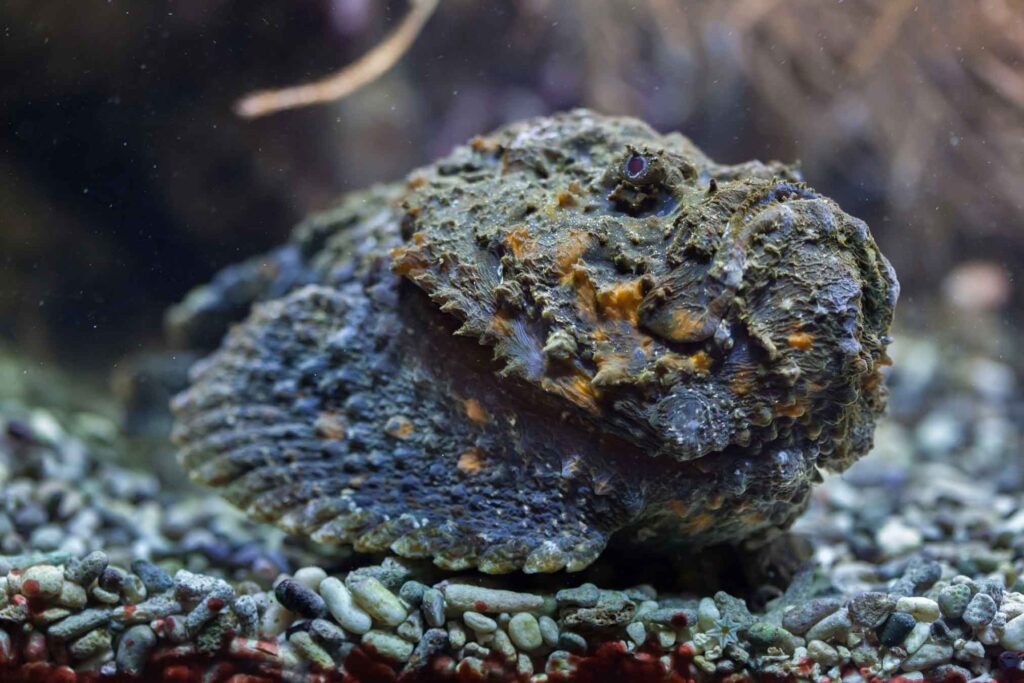
Stonefish
Synanceia verrucosa
MAXIMUM LENGTH

40 cm
FEEDING

Carnivore
ACTIVITY

Diurnal
The stonefish is called this because it has warts and stains over its body to disguise itself in the medium that surrounds it. It allows the seaweed and anemones to grow on its skin to add to its camouflage. This fish is usually 30-40 cm long and more than a third of its body is occupied by the cephalic area. The mouth, which is on the top of the body like the eyes, is large and stands forward when open and then returns to its initial position. This allows it to catch fish of a considerable size. Its colouring can vary depending on the substrate where it is found. The skin has stains that imitate sponge and seaweed, which help it in its disguise. The ventral, dorsal and anal fins have some hard radii transformed into needles, which can inject poison.
The dorsal fin of the stonefish has 12 or 13 hard radii modified into needles with a capacity to inject poison. There are a further 3 needles on the anal fin and 2 on the ventral. Each needle has one or two poisonous glands. It is a poison that affects the cells and the nervous system, similar to that of the cobra. The poisonous needles are not used to hunt fish for feeding, but only as defence against other predators. They spend most of their time still, waiting for possible prey to suck in. It feeds on fish and crustacean. It sucks in its prey with its protractile mouth in a virtually imperceptible movement that lasts tenths of a second. It has oviparous reproduction, that is, it lays eggs.
The stonefish lives at depths up to 20 m, often under protruding rocks, against which it camouflages.
Interesting facts
This is the most poisonous fish in the world. Its sting can cause death in a few hours; otherwise, curing is a very slow process (months). Wounds must immediately be treated with warm water (as this neutralises the toxin). There is a specific antidote made in Melbourne, Australia.
Distribution
Conservation status
